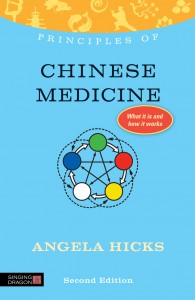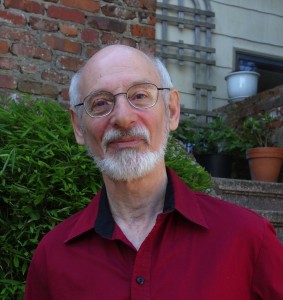The following has been adapted from Qigong Through The Seasons – How to Stay Healthy all Year Long with Qigong, Meditation, Diet and Herbs by Dr. Ronald H. Davis, published by Singing Dragon, 2015.
Spring is the Wood Phase
 This is a heady, invigorating, sometimes disturbing season with wild fluctuations of energy surging throughout nature as birth, arousal, and movement. The momentum created by spring Qi gives structure and impetus to the world: young trees thrusting skyward, icy rivers flooding valleys, babies everywhere screeching with the joy of life. In humans, Qi rises like a slow tide coming up from its winter storage in the lower abdomen and moving into the chest where it stimulates the Liver with fresh vitality. As an infusion of energy, the rising Qi carries benefits as well as the potential for problems. The practice of Spring Qigong centers on using qigong exercises, foods, herbs, and meditation to nourish the Liver. This amazing visceral structure has more functions that any other single organ. During the process of filtering and detoxifying the blood, producing hundreds of enzymes and hormones, and regulating the volume of circulating blood, the liver tends to become congested. In order to do these many tasks it must be decongested so that it becomes supple, enlivened and fully functional.
This is a heady, invigorating, sometimes disturbing season with wild fluctuations of energy surging throughout nature as birth, arousal, and movement. The momentum created by spring Qi gives structure and impetus to the world: young trees thrusting skyward, icy rivers flooding valleys, babies everywhere screeching with the joy of life. In humans, Qi rises like a slow tide coming up from its winter storage in the lower abdomen and moving into the chest where it stimulates the Liver with fresh vitality. As an infusion of energy, the rising Qi carries benefits as well as the potential for problems. The practice of Spring Qigong centers on using qigong exercises, foods, herbs, and meditation to nourish the Liver. This amazing visceral structure has more functions that any other single organ. During the process of filtering and detoxifying the blood, producing hundreds of enzymes and hormones, and regulating the volume of circulating blood, the liver tends to become congested. In order to do these many tasks it must be decongested so that it becomes supple, enlivened and fully functional.
In the spring, the Rising Yang Qi emerges from the lower dan tian (lower abdomen) and begins a season-long ascent to the upper and outer regions of the body. As it passes into the Middle Dan Tian (chest), it encounters the Liver. If this blood-rich organ retains stagnant blood and metabolic waste, which typically happens after winter’s inactivity, it will obstruct the Qi flow and result in a condition called Stagnant Liver Qi and Blood. According to Chinese medicine, the Liver controls the smooth and harmonious flow of both Qi and blood. Any obstruction to this flow will cause a serious functional disruption in the circulation of vital energy and vascular components. Stagnant Liver Qi and Blood, an all too common disorder, has physical symptoms of muscle pain, menstrual cramps, trembling movements, poor balance, headaches, neck pain, numbness in hands and feet, vision problems, digestive ailments, and more. The mental and emotional symptoms can run the spectrum from frustration and irritability to anger and rage.
Anger, stagnation, and kindness
When the normal emotion of anger becomes prolonged, repressed, or inappropriate, it often results in Stagnant Liver Qi. This disorder affects women and men, but because each gender exists as fundamentally either yin or yang, Qi stagnation usually results in different problems for each sex.
Men have innate yang energy; women have innate yin. Yang energy tends to expand outward; it’s active and dispersive. Yin energy embraces receptivity, containment, and concentration. The gender predisposition to problems of Stagnant Liver Qi hinges on men being more yang/fire, and women more yin/ blood. Stagnant Liver Qi, if not corrected, becomes virulent and flares up as Liver Fire in men and as Stagnant Liver Blood in women:
- Anger > Stagnant Liver Qi + Men > “Liver Fire Rising” = muscle spasm, ulcers, hypertension, heart disease.
- Anger > Stagnant Liver Qi + Women > “Stagnant Liver Blood” = menstrual disorders, varicose veins, insomnia, anxiety.
While disturbing and potentially dangerous, Stagnant Liver Qi can be effectively treated. Acupuncture and herbal remedies can release obstructions to the flow of Qi and prevent stagnation. Qigong can remedy the condition by gathering fresh Qi and properly circulating it through the body’s energy pathways and storage centers. Meditation will definitely enhance Qi flow, clear the mind of distractions, and nurture the virtue of kindness. Having a self-care practice of qigong and meditation is one of the best ways for you to nurture the great Yang Qi of Spring and benefit from this infusion of vital energy.
Entering Quiescence
One of the greatest benefits of Qigong is the internal relaxation of the body. The Qi can only circulate with maximum benefit when the organs, the surrounding muscles, the web of connective tissue, and the intrinsic vessels and nerves are calmly relaxed. This state of physiological quietness is unique to Qigong. It is a kind of alert peacefulness that melds the body and mind together into a complete whole. Dr. Jiao Guorui, a well respected contemporary Qigong practitioner in China, calls this state “entering quiescence.” He describes it in his book Qigong Essentials for Health Promotion, China Today Press, 1990:
Entering quiescence is a major requirement of qigong exercise. But how to achieve this is a common problem for beginners. First of all we must understand the quiescent state correctly. This state exists relatively as compared to the dynamic state. Life is movement and the quiescent state is actually stillness in movement. It is not motionless. Therefore, qigong exercise is essentially quiescent motions. When we enter the quiescent state we are entering a special state of movement. *
What then is quiescence? It is a special state of inward quietude. In this state the brain eliminates interferences from both inside and outside the body, providing favorable conditions for the central nervous system to carry out the active, natural regulation of body functions and mental abilities. Some people, after entering quiescence during qigong, feel like a frozen river that is melting during the springtime…their whole body is completely relaxed and comfortable.
*Dr. Jiao is referring to the movement of Qi in the body.
The state of being “completely relaxed” is especially important for the liver. Inner Nourishing, Nei Yang Gong, is an excellent internal qigong practice for relaxing the liver. According to Ken Cohen, well respected qigong master and scholar, Inner Nourishing was a secret Daoist healing method of the Ming dynasty that was transmitted by qigong masters to only one select student. In 1947 Dr. Liu Guizhen began to teach this powerful qigong exercise to the public for the greater good of society.
How to practice Inner Nourishing
This exercise may be done sitting or lying down. Most practitioners find that this outwardly simple practice instills a wonderful sense of well being. Rest and be comfortable but alert. When you inhale, think of bringing the qi up the back, over the head and to the mouth. While inhaling gently place the tip of your tongue on the roof of your mouth just behind the front teeth and silently say, “I am calm.” Then start to exhale and bring the qi down the front of your body to the lower dan tian. While exhaling let the tongue rest gently on the floor of your mouth and silently say, “and relaxed.” The tongue movement is like a pump that moves the Qi through the Governing and Conception vessels. Do this for about five minutes. Then stop the tongue movement and put your attention on the phrase “I am calm and relaxed” synchronized with your breathing, for a few more minutes. Then drop the phrase and just relax as you enter quiescence. Be there as long as you wish.
~~~
Ronald Davis, DC. LAc. Dipl Acu (NCCAOM) has dedicated thirty years to helping people discover their optimal state of well being based on physical integrity, mental clarity and nutritional support. As a chiropractor, he understands the critical interrelationship of physical form, physiological function and visceral health. As an acupuncturist, he knows that optimal well being depends on the essential flow of vital energy and blood throughout the body/mind. The integration of this knowledge with his extensive practice in medical qigong, meditation, and Chinese medicine has led to the development of a series of classes called “Qigong Through The Seasons” which is a comprehensive program of qigong, meditation and dietary guidelines that allows one to be healthy all year long. Dr. Davis is the creator of the popular CD, Guided Meditations For Summer, and is the author of Qigong Through the Seasons available from Singing Dragon, February 2015. He may be reached through www.thehealthmovement.com.


















